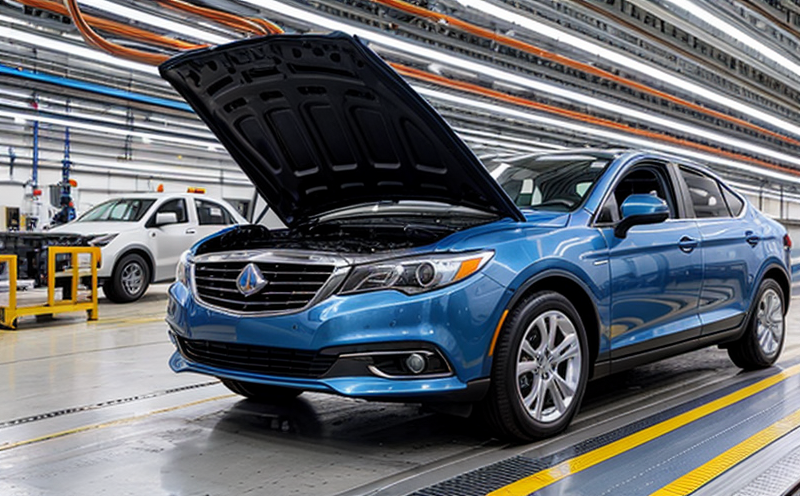Automotive manufacturing compliance refers to the adherence of automotive manufacturers to a set of regulations, laws, and standards that govern the production, testing, and certification of vehicles. These regulations vary by country, region, and even vehicle type, making it crucial for manufacturers to stay up-to-date on the latest requirements.
In the United States, for instance, the National Highway Traffic Safety Administration (NHTSA) is responsible for enforcing automotive safety standards, while the Environmental Protection Agency (EPA) regulates emissions. The California Air Resources Board (CARB), meanwhile, has its own set of regulations that are stricter than federal standards in some areas.
Other countries have their own regulatory bodies, such as the European Unions New Car Assessment Programme (Euro NCAP), which tests vehicles for safety and awards ratings accordingly. In Japan, the Ministry of Land, Infrastructure, Transport and Tourism (MLIT) oversees automotive manufacturing compliance.
Manufacturers must comply with these regulations in several areas:
Safety features: Airbags, anti-lock braking systems (ABS), electronic stability control (ESC), and rearview cameras are just a few examples.
Emissions: Fuel efficiency, carbon dioxide emissions, and other pollutants are regulated by various agencies worldwide.
Crashworthiness: Vehicles must meet minimum standards for crash testing to ensure occupant safety in the event of an accident.
Manufacturers also face challenges related to supply chain management, as they must ensure that their suppliers comply with regulations as well. This includes:
Material sourcing: Ensuring that materials used in production are sourced from responsible and compliant suppliers.
Process control: Implementing processes to track and verify compliance throughout the supply chain.
Training and education: Educating employees on regulatory requirements and expectations.
Manufacturers must also address intellectual property (IP) protection, as vehicles often feature patented technologies. This includes:
Licensing agreements: Manufacturers may need to obtain licenses to use proprietary technologies from other companies.
IP protection strategies: Implementing measures to safeguard against patent infringement and theft.
Regulatory compliance: Ensuring that products comply with IP-related regulations.
Now lets take a closer look at two areas of automotive manufacturing compliance in bullet point format:
Regulatory Compliance for Emissions Testing
Emissions standards: Manufacturers must meet specific emissions limits for various pollutants, including nitrogen oxides (NOx), particulate matter (PM), and volatile organic compounds (VOC).
Fuel efficiency testing: Vehicles are tested to ensure they meet or exceed fuel economy targets.
Test cycles: Various test cycles are used to simulate real-world driving conditions, such as the New European Driving Cycle (NEDC) and the World Harmonized Light Vehicle Test Procedure (WLTP).
Emissions certification: Manufacturers must obtain certifications from regulatory agencies for each vehicle model.
Ongoing monitoring: Emissions testing is an ongoing process, with regular checks to ensure vehicles continue to meet emissions standards.
Regulatory Compliance for Cybersecurity
Connected vehicle technologies: Modern vehicles often feature advanced electronics and connectivity, making them vulnerable to cyber threats.
Vulnerability identification: Manufacturers must identify potential vulnerabilities in software and hardware components.
Penetration testing: Regular penetration testing helps ensure that systems can withstand potential cyber attacks.
Security updates: Manufacturers must provide ongoing security updates to address emerging threats.
Supply chain management: Ensuring that suppliers prioritize cybersecurity and take measures to prevent data breaches.
QA Section:
Q: What are the most common causes of automotive manufacturing compliance failures?
A: The most common causes include inadequate documentation, failure to meet regulatory requirements, and non-compliance with industry standards. Regular audits and assessments can help identify areas for improvement.
Q: How do manufacturers ensure that their suppliers comply with regulations?
A: Manufacturers typically conduct regular audits, assess supplier performance, and implement corrective actions as needed. They may also require suppliers to provide certifications or documentation demonstrating compliance.
Q: What is the process for obtaining emissions certification in the United States?
A: The process involves submitting vehicle testing data to regulatory agencies, such as the EPA, and meeting specific emissions standards. Manufacturers must also obtain a certificate of conformity from the agency.
Q: How do manufacturers address intellectual property (IP) protection in automotive manufacturing?
A: Manufacturers implement IP protection strategies, including licensing agreements, patents, and trade secrets. They may also establish IP policies and procedures for employees to follow.
Q: What are some common challenges faced by manufacturers regarding regulatory compliance?
A: Challenges include staying up-to-date on changing regulations, managing supply chain compliance, and addressing emerging technologies that require new standards or certification processes.
Q: Can a manufacturers lack of compliance with regulatory requirements impact their business reputation?
A: Yes, failing to comply with regulations can damage a manufacturers reputation, leading to loss of customer trust and revenue. It may also result in fines, recalls, or other penalties.
Q: How do manufacturers prioritize cybersecurity in automotive manufacturing?
A: Manufacturers typically implement a comprehensive security strategy that includes regular vulnerability identification and penetration testing, as well as ongoing security updates and training for employees.
Q: What are some best practices for automakers to follow regarding emissions testing and certification?
A: Best practices include:
Regularly reviewing and updating emissions testing procedures
Maintaining accurate records of testing data and results
Ensuring that testing is conducted in compliance with regulatory requirements
Providing ongoing training for employees involved in emissions testing and certification
Q: What are the consequences of non-compliance with automotive manufacturing regulations?
A: Consequences may include fines, recalls, loss of business reputation, and damage to customer trust. Non-compliance can also result in decreased revenue due to loss of market share or reduced sales.
In conclusion, automotive manufacturing compliance is a complex and multifaceted issue that requires manufacturers to stay informed about changing regulations and industry standards. By prioritizing regulatory compliance, manufacturers can ensure the safety and quality of their vehicles while minimizing potential risks and consequences.

































